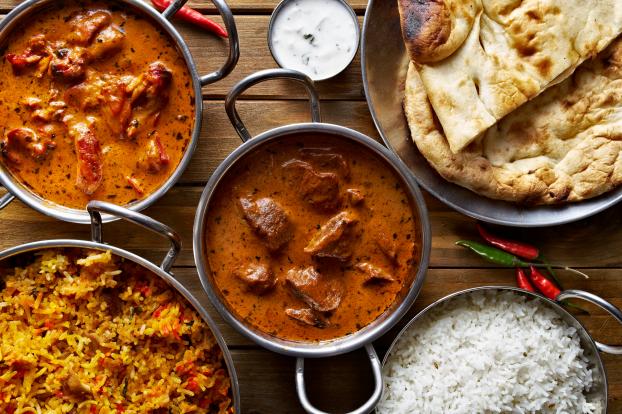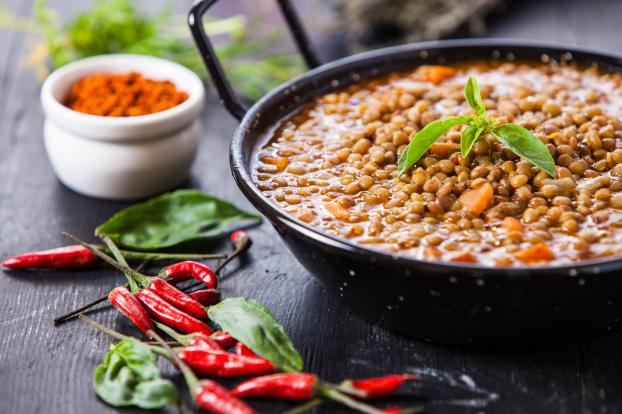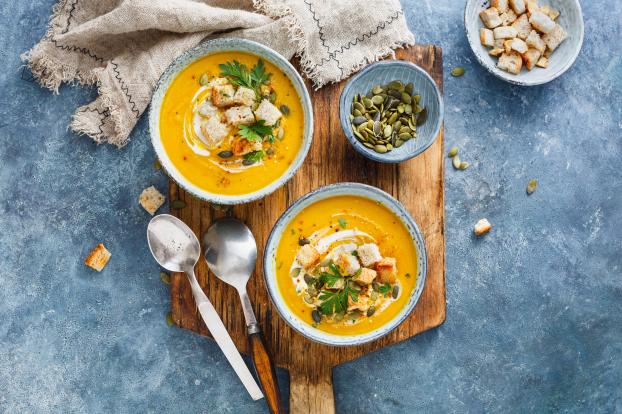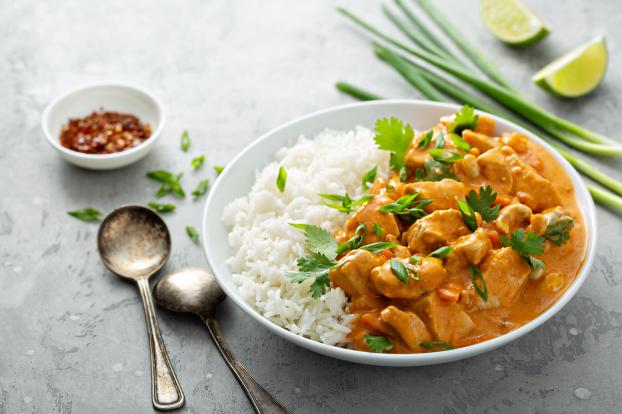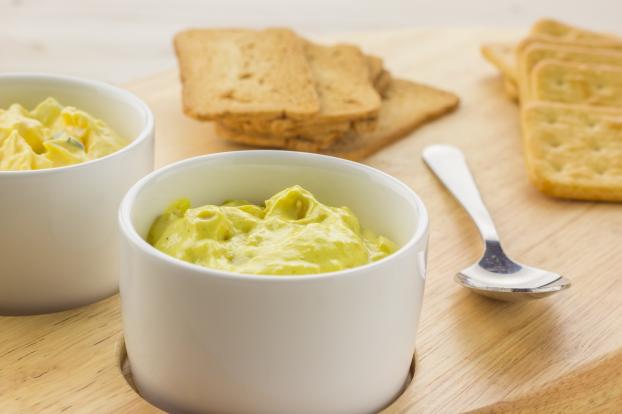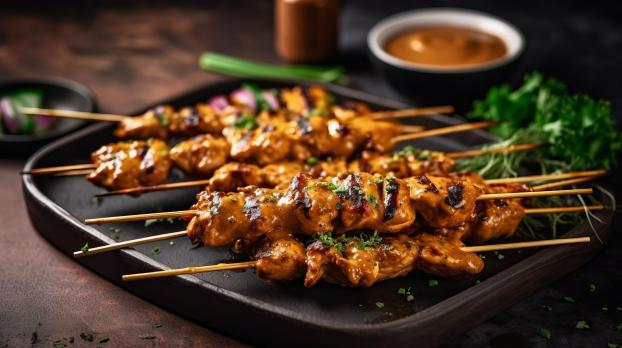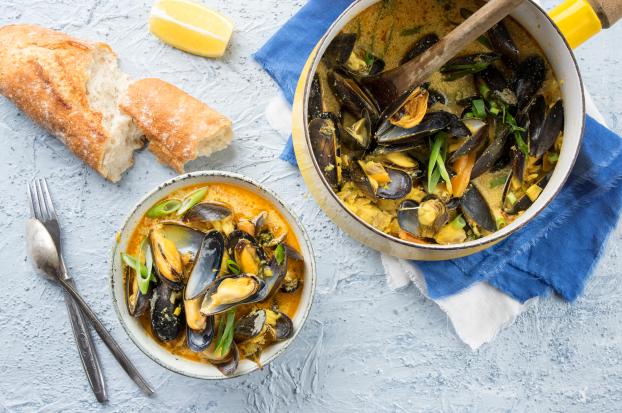How to use curry properly in cooking?
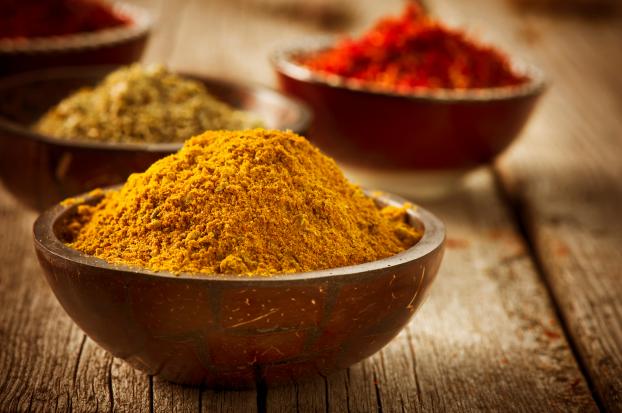
© Adobe Stock
Symbol of Indian cuisine and also widely used in Asian and Creole cuisine, curry is used to perfume And raise not only the dishes that bear the same name, but also many others! It goes perfectly with fish, seafood and meat, as well as vegetables and other ingredients. But when to add it? How to choose it well? What dishes to pair it with? Discover our tips and advice for using curry properly in cooking!
What is curry?
He is a scholar blend of several spices, which varies depending on countries, regions and even families! In the curry spice mixture, we most often find: turmeric, which also gives the curry its characteristic yellow color, coriander, ginger, cinnamon, fenugreek, desidrated onions, black pepper, caraway, cloves and nutmeg. There are more spicy versions, such as yellow curry, which contains cayenne pepper. As curry is a dry blend of spices, it can be consumed all year round.
Where does its name come from?
Used in India for centuries, this mixture of spices was originally called “masala” which means “mixture” in Tamil. It was the English, after colonizing India in the 18th century, who imported this mixture of spices to Europe and renamed it “curry”, by extension of the dishes which bear the same name.
What are the benefits of curry?
Thanks to turmeric and other spices that make it up, curry has beneficial effects on our health: it is anti-inflammatory, rich in antioxidants, facilitates digestion and strengthens the immune system.
How to choose the right curry?
Above all, trust your sense of smell! When the curry is well dosed and fresh, it is very fragrant. Its aroma is very pronounced and captivating. At 750g, we really like the brand’s curry Cook, which adds flavor to our plates. This is a organic curry of superior quality, available in two versions: mild curry, and strong Madras curry with Cayenne pepper. Cook has been the specialist in organic spices since 1990. The brand takes our taste buds on a journey with more than 200 references of spices, herbs and ready-to-use mixtures. In addition, Cook’s approach – CSR certified – is respectful of humans and the planet, with a strong orientation towards fair trade, through the “Biopartenaire” label, and a very clear reason for being: to taste the adventure of a just world.
To choose your curry carefully, think about the result you want to obtain: if you want flavor a dish, choose it mild currywhile if you want to raise and titillate the taste buds, head instead towards the strong Madras curry.
In what type of cooking is it used?
In Indian cuisine, curry is included in the majority of dishes based on meat, fish, vegetables and legumes. In southwest Asian cuisine, such as Thai cuisine, curry is used to flavor broths with pieces of meat or vegetables, which are served with rice or noodles.
In other Asian cuisines, as in those of Reunion Island or Mauritius, curry is also used to flavor wok-fried dishes, often combined with coconut milk.
Over time, curry has become the most used spice blend in the world! In the western cuisinecurry brings an exotic touch to grilled meat or fish, fried rice or fried vegetables.
What foods does curry go best with?
The curry is perfect with white meats, especially those of chicken, turkey, pork and veal. It goes very well with seafoodsuch as shrimps and mussels and it is perfect with delicate fish, such as monkfish, cod or sole.
Lenses And Chickpeas are legumes that you can enhance with curry. It is also perfect with vegetables like cauliflower, leeks, carrots, green beans and zucchini. And he’s just wonderful with the potatoes.
Curry also goes well with exotic fruits, such as mango, pineapple and papaya, just as with apples, pears, peaches, apricots or raspberries. It is therefore very interesting for concocting original desserts based on fruits and spices. And as curry goes well with chocolate in small doses, the more daring can prepare chocolate and curry cakes!
The other ingredient, sometimes inseparable from curry, is the coconut milk. It softens the strength of curry and rounds out cooked dishes. This is why they are combined in many recipes. THE ginger It is also often combined with curry, when we want our dish to be “hotter” and even more aromatic.
How to measure the curry correctly and when to add it?
Typically, most recipes use 1 teaspoon of curry powder for 4 people. But this can vary, depending on the intensity you want to give to the dish. The curry is added at the start of the preparation, so that its fragrance and flavor can emerge during cooking and coat the ingredients of the dish.
Our inspirations to enhance your recipes with curry
To give some pep to vegetable soupsadd a little curry at the start of cooking, before adding the water or broth.
Curry is ideal with simmered white meats, it is thanks to it that we can prepare the most famous Indian dishes, such as tikka masala, chicken korma or chicken curry, but not only that. Also use it in a pork or beef stew, it will modernize your grandmother’s recipe by giving it an exotic touch.
Sprinkle them with curry quick fry meat or vegetables, just after adding all the ingredients. Another option: before adding the meat or vegetables to your pan, you can also brown the garlic and onion and then add the curry. This will give a lot of flavor to your pan.
Curry also works wonders in condiments. If you are a fan of mayonnaise homemade, add a touch of curry: it will become super original and fragrant, in addition to being delicious. Personalize your Vinaigrette : add a few pinches of curry just before emulsifying it, and your salad will no longer be the same!
As the curry goes very well with the Honey, add a touch of it to your honey sauces for duck breast or for caramel pork. And to twist the sauce based on cream which will accompany your meat, add a teaspoon of curry: the sauce will be fragrant and less classic.
In the mixed grills, curry is an essential ally for flavoring and giving character to meat or fish. Whether on skewers or slices, sprinkle the meat or fish with the curry, then add the other herbs and cook on the barbecue or under the oven grill. And if you plan to do marinate meat or fish before cooking, add a teaspoon of curry to the other ingredients of your marinade, place the meat or fish there, marinate them for a few hours in the fridge and then cook.
A shrimp or white fish curry, as well as fish papillotes or even a seafood stir-fry will be even more delicious if you add curry at the start of the preparation. In France, we greatly appreciate mussels marinière with cream and curry. To prepare them, simply follow your favorite recipe for mussels marinière, and as soon as the mussels are open, filter their cooking juices and return them to the pan. Add the curry and the creamwhisk, then put the mussels back in the sauce.
Two more tips
– To perfume and color pasta or riceadd a nice pinch of curry to the cooking water, it will be surprising!
– A little curry added when kneading your pastrywill be perfect for making a vegetable quiche more original and more fragrant.
Now that you know everything about curry, you will be able to enhance your dishes with a fragrant and exotic touch to impress your guests. Come on, get to the kitchen!

